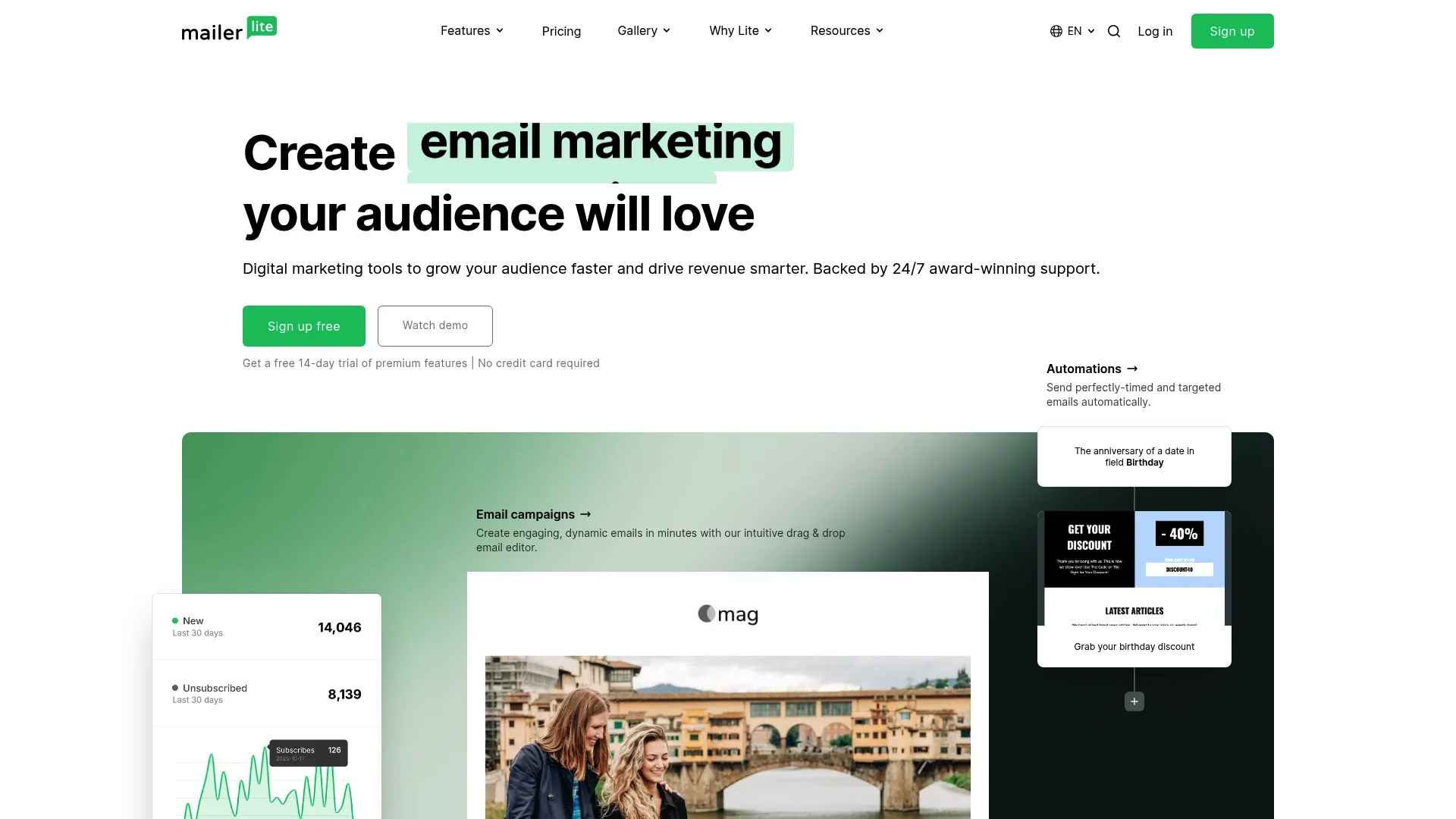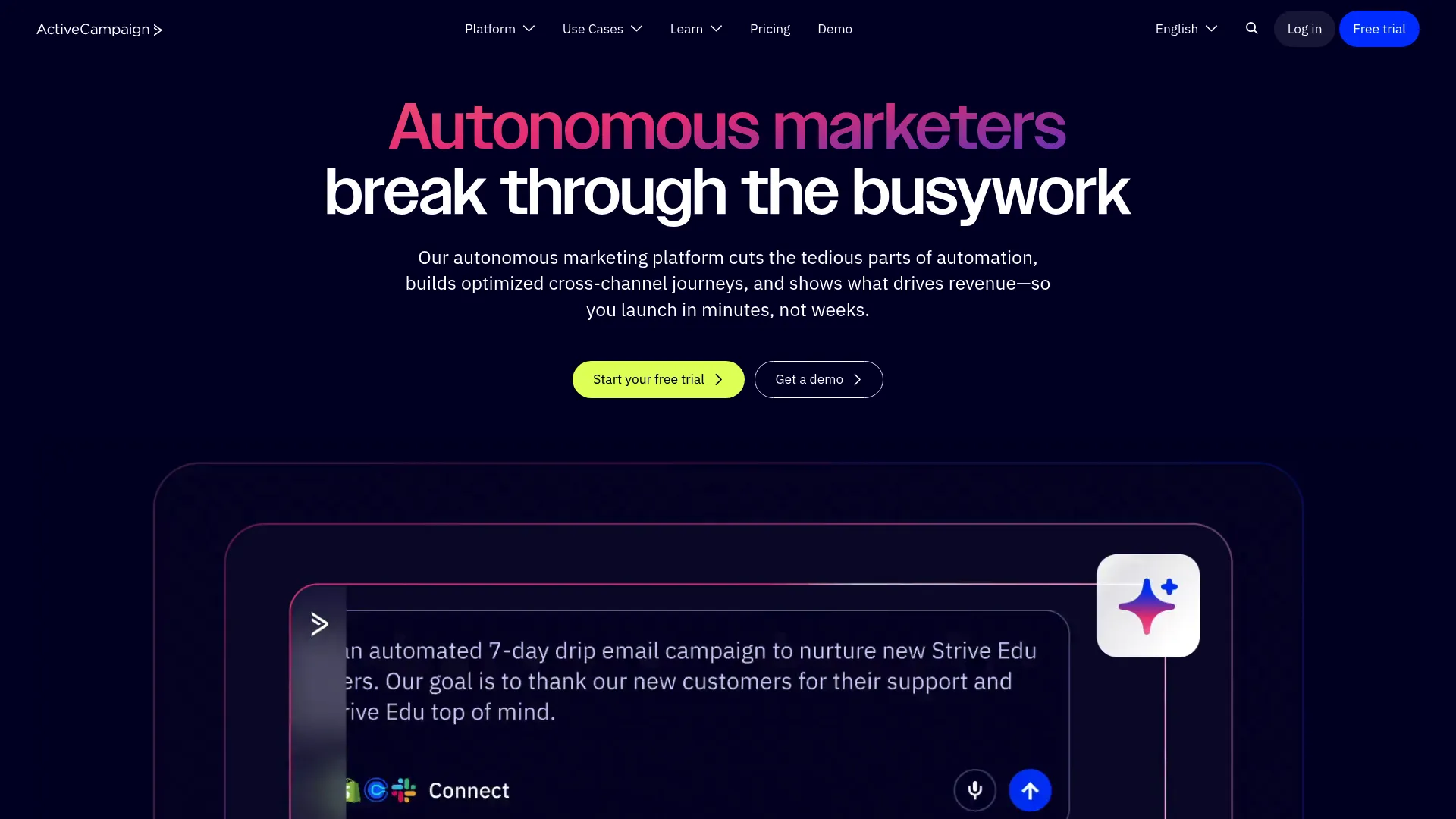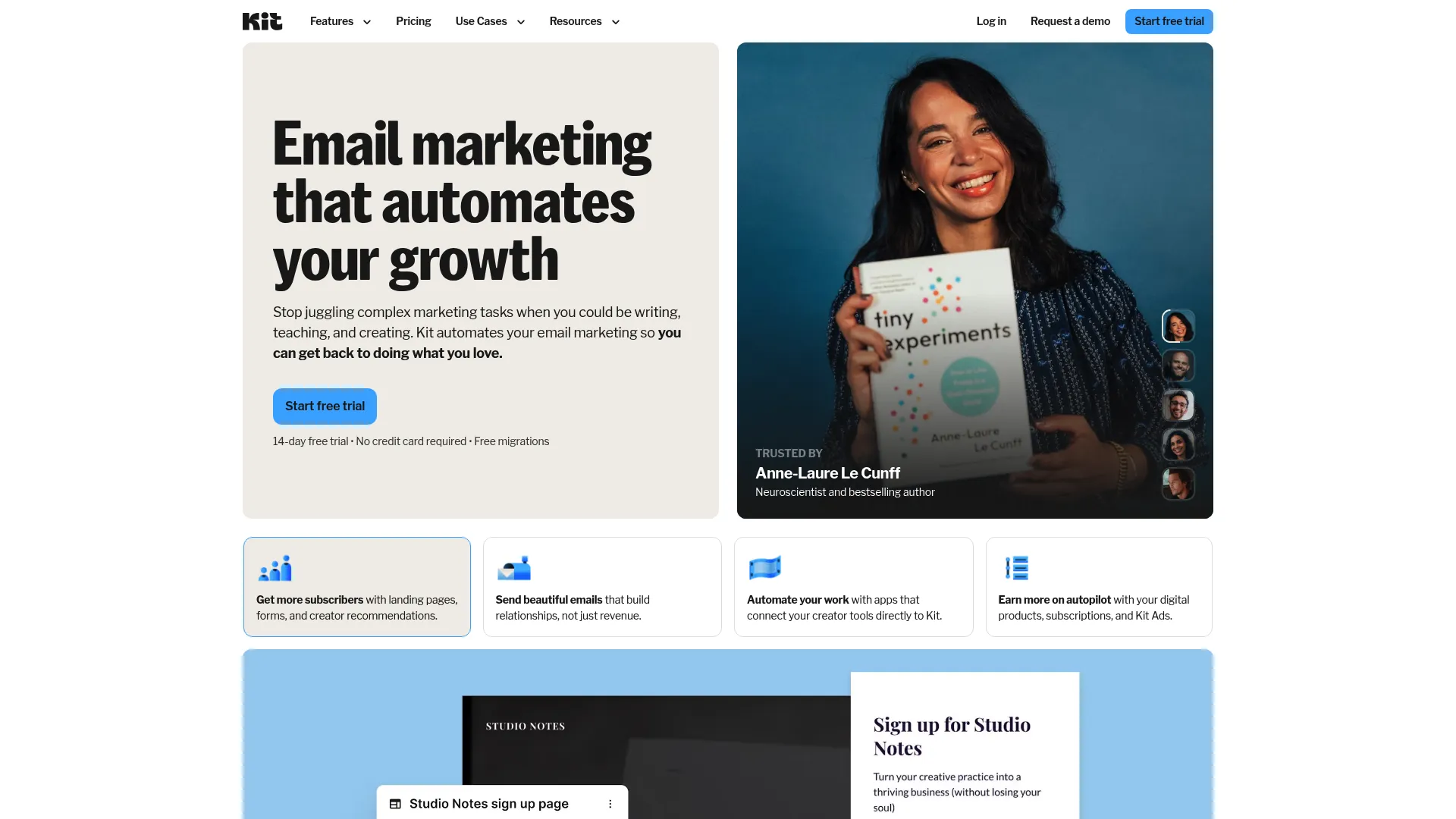
AWeber Review: Why This Email Marketing Pioneer Might Not Be Your Best Choice in 2024
I’ve been testing AWeber for months now, and honestly? I’m pretty disappointed. Look, I wanted to love this platform – it’s been around for 26 years, has fantastic customer support, and everyone says it’s “beginner-friendly.” But here’s the thing: being beginner-friendly in 2024 shouldn’t mean being stuck with features from 2004.
After wrestling with their clunky automation builder and getting frustrated by their limited segmentation options, I realized something important. AWeber is like that reliable old Honda Civic your dad drives – it’ll get you where you need to go, but don’t expect to impress anyone or have fun doing it.
I’ll walk you through everything I discovered during my deep dive into AWeber’s strengths, weaknesses, and whether it deserves a place in your marketing stack. Spoiler alert: unless you really, really value hand-holding over actual marketing power, you’ll probably want to look elsewhere.
Table of Contents
-
TL;DR: AWeber at a Glance
-
AWeber Criteria Evaluation
-
AWeber: The Email Marketing Veteran
-
Top 4 Alternatives to AWeber
-
Frequently Asked Questions
-
Final Thoughts: Is AWeber Worth Your Investment?
TL;DR: AWeber at a Glance
Here’s what I discovered after putting AWeber through its paces (and occasionally wanting to throw my laptop out the window):
-
Customer support excellence: AWeber’s support team is genuinely amazing – they’ll answer your calls at 2 AM and actually help. But great support can’t fix fundamentally outdated features
-
Pricing reality check: Sure, it starts cheap, but those costs escalate fast when you need anything beyond basic newsletter functionality
-
Perfect for beginners only: If you’re terrified of technology and never plan to do anything sophisticated with email marketing, AWeber might work. Everyone else will outgrow it in about six months
-
Solid foundation: Their deliverability rates (83-91%) are decent, and they integrate with tons of apps (750+) – I’ll give them credit where it’s due
-
Template inconsistency: I spent an entire afternoon scrolling through their 600+ templates, and half of them looked like they were designed when flip phones were cool
-
Automation limitations: Trying to build complex customer journeys in AWeber is like trying to perform surgery with a butter knife – technically possible, but why torture yourself?
Bottom line? If you need someone to hold your hand through every step and don’t mind being stuck in email marketing kindergarten forever, AWeber’s your platform. Everyone else should look elsewhere.
AWeber Criteria Evaluation
I put AWeber through the wringer across ten critical areas. Here’s how it actually performed:
|
Criteria |
Rating |
Details |
|---|---|---|
|
Email Deliverability & Infrastructure |
4/5 |
Solid deliverability rates (83-91%) – not amazing, but your emails won’t end up in spam jail |
|
Ease of Use & Learning Curve |
4.5/5 |
They really do baby you through everything (in a good way) – even my tech-phobic clients figured it out |
|
Template Quality & Design Flexibility |
3.5/5 |
Huge template library, but quality is all over the place – some gems, lots of duds |
|
Automation Capabilities |
3/5 |
Imagine trying to build IKEA furniture with only a screwdriver – that’s AWeber automation |
|
Segmentation & Targeting |
3/5 |
Works fine for basic stuff, but try anything sophisticated and you’ll hit walls fast |
|
Pricing Structure & Value |
3/5 |
Starts reasonable, then jumps to “are you kidding me?” levels pretty quickly |
|
Integration Ecosystem |
4/5 |
Connects to most things you’d need – this part they actually got right |
|
Customer Support Quality |
5/5 |
Legitimately the best support I’ve encountered – these people are saints |
|
Reporting & Analytics |
3/5 |
Standard stuff with some nice touches, but don’t expect deep insights |
|
Scalability & Advanced Features |
3/5 |
Handles growth okay, but advanced features? That’s a hard no |
AWeber: The Email Marketing Veteran
What AWeber Is Best Known For
AWeber is basically the grandfather of email marketing – they’ve been around since 1998 and invented the autoresponder. That’s cool and all, but it’s also kind of the problem. They built their reputation on being the reliable, simple choice back when email marketing was just “send newsletter, hope people read it.”
When people ask what AWeber is used for, the answer is pretty much what it was 15 years ago: basic email campaigns and simple autoresponder sequences. It’s like they got comfortable being the “safe choice” and forgot that the world kept moving.

Core Features That Define AWeber
Here’s what you get with AWeber – and trust me, I’ve tested every single feature while slowly losing my sanity.
Their 600+ email templates sound impressive until you start browsing them. The quality is wildly inconsistent – you’ll find some genuinely nice designs mixed in with templates that would make a MySpace page blush. Their Smart Designer tries to create branded templates from your website automatically, which is a cool idea that works about 60% of the time. When it fails, you’re left cleaning up a mess that looks like a website threw up on your email.
The drag-and-drop email builder is actually pretty decent. It includes content blocks and integrates with Canva, so even non-designers can create something that doesn’t look terrible. I’ll give them points here – the interface is intuitive enough that I haven’t gotten any panicked calls from clients at midnight.
But then we get to automation, and this is where I start grinding my teeth. AWeber pioneered autoresponders, which makes their current automation capabilities even more embarrassing. You get basic linear sequences and simple triggers – that’s it. Want conditional logic? Behavioral workflows? Complex customer journeys? Good luck with that. It’s like they stopped innovating the moment they figured out how to send a follow-up email.
The extras are decent enough: landing page builder with 160+ templates, e-commerce integration for Stripe and PayPal, free stock photos, A/B testing for up to 3 variations, and RSS-to-email automation. The API exists for custom integrations, though most people stick with their built-in connections because honestly, who has time to code around their limitations?
Pros: Where AWeber Actually Shines
Customer Support That Actually Cares
I’m not exaggerating when I say AWeber has the best customer support I’ve ever encountered. These people answer the phone at 2 AM on Sunday (yes, I tested this), and they actually know what they’re talking about. Even free users get live chat, email, and phone support 24/7.
I once called them at 11 PM on a Sunday, and not only did someone answer, but they walked me through a complex integration issue without making me feel like an idiot. That level of service is genuinely rare in this industry.
Beginner-Friendly to a Fault
If you’re the type of person who breaks out in a cold sweat at the thought of marketing automation, AWeber will hold your hand through everything. The interface is clean, the onboarding is thorough, and they have more educational resources than a small college.
I’ve watched complete beginners go from “what’s an autoresponder?” to sending their first campaign in under an hour. That’s genuinely impressive, even if it comes at the cost of advanced functionality.
Reliable Email Delivery
With deliverability rates between 83-91%, AWeber won’t embarrass you. They handle authentication properly, manage IP reputation well, and your emails generally end up where they’re supposed to. It’s not the absolute best in the market, but it’s solid enough that you won’t lose sleep over it.
Actually Generous Free Plan
The free tier gives you 500 subscribers and 3,000 emails per month with access to basic features AND customer support. Most competitors either charge for support or give you such limited free plans that they’re basically useless. AWeber’s free plan has genuine value.
Cons: Where AWeber Makes Me Want to Scream
Automation That Belongs in a Museum
This is AWeber’s biggest problem, and it’s a doozy. Their automation capabilities are stuck somewhere around 2005. I spent three hours one night trying to build a simple welcome sequence with conditional logic, only to discover that AWeber doesn’t actually support what I needed. Three hours of my life I’ll never get back.
Comparing AWeber’s automation to something like ActiveCampaign is like comparing a flip phone to an iPhone. Sure, the flip phone makes calls, but why would you torture yourself?
Segmentation That Actually Limits You
The basic plans give you a whopping 3 custom segments. Three. In 2024. Want to segment based on engagement combined with purchase history? Want to create dynamic segments that update automatically? AWeber’s response is basically “have you tried creating more lists?”
I actually had a support rep suggest I create multiple lists to work around segmentation limits. That’s not a solution, that’s admitting your platform is broken.
Templates That Time Forgot
Sure, they have 600+ templates, but I’d estimate about 200 of them are actually usable in 2024. The rest look like they were designed by someone who thought Comic Sans was the height of typography. I spent an afternoon trying to find decent templates for a client and ended up feeling like I was digging through a clearance bin at a design graveyard.
Pricing That Punishes Growth
AWeber’s pricing starts reasonable but jumps to ridiculous levels once you need advanced features. That leap to $899/month for enterprise features? I literally laughed out loud. For that price, I could hire a part-time marketing assistant and use a better platform.
Criteria Evaluation: The Brutal Truth
Email Deliverability & Infrastructure: 4/5
AWeber handles the basics well – your emails get delivered, authentication works properly, and they manage IP reputation competently. It’s not industry-leading, but it’s reliable enough that you won’t have to explain to your boss why half your emails ended up in spam folders.
Ease of Use & Learning Curve: 4.5/5
This is where AWeber genuinely excels. The onboarding is thorough without being overwhelming, the interface makes sense immediately, and finding features doesn’t require a treasure map. If you’re new to email marketing, AWeber will make you feel capable instead of confused.
Template Quality & Design Flexibility: 3.5/5
It’s a mixed bag. Some templates are genuinely attractive and modern, while others look like they were designed during the Bush administration (the first one). The Smart Designer feature is innovative when it works, but inconsistent execution means you’ll spend time fixing what should have been automatic.
Automation Capabilities: 3/5
This rating is generous. AWeber’s automation is basic to the point of being painful. Linear sequences and simple triggers are fine if you’re running a newsletter from 2008, but modern email marketing demands more sophistication than AWeber can deliver.
Segmentation & Targeting: 3/5
Functional for basic needs, but severely limited on lower-tier plans. Advanced targeting requires expensive upgrades, and even then, the options feel restrictive compared to modern alternatives.
Pricing Structure & Value: 3/5
Starts competitive but becomes expensive quickly. The value proposition deteriorates as your needs grow, which is exactly the opposite of what you want from a business tool.
Integration Ecosystem: 4/5
AWeber connects to most essential business tools without drama. The integration library is extensive, and I rarely encounter connectivity issues. This is one area where their age actually helps – they’ve had time to build connections everywhere.
Customer Support Quality: 5/5
Legitimately the best support in the industry. 24/7 availability, knowledgeable staff, and they treat free users the same as paying customers. This alone might justify the platform for some users.
Reporting & Analytics: 3/5
Standard email marketing metrics with some nice touches, but nothing that’ll blow your mind. You get the basics plus a few extras, but don’t expect deep insights or advanced analysis capabilities.
Scalability & Advanced Features: 3/5
Handles list growth fine, but advanced features are either missing or locked behind expensive upgrades. The platform works for simple scaling but becomes limiting as your marketing sophistication increases.
What Real Users Actually Say
G2 users consistently praise AWeber’s support and ease of use while complaining about the limited automation. The pattern is clear: people love the hand-holding but feel constrained by the basic feature set. One review summed it up perfectly: “Great for beginners, but you’ll outgrow it fast.”
Trustpilot reviews tell a similar story. Long-term users appreciate the stability and support, but newer users often express disappointment with the dated interface and limited features. The most common complaint? “It feels outdated compared to other platforms.”
Reddit discussions are even more brutal. Users appreciate the reliability but frequently cite AWeber’s limitations as reasons for switching. The consensus seems to be that AWeber works initially but becomes frustrating as businesses mature their email marketing strategies.
Pricing: What You’ll Actually Pay (And Why You’ll Regret It)
AWeber starts with a decent free plan – 500 subscribers and 3,000 emails monthly. The Lite plan runs $12.50-15/month for 500 subscribers but comes with significant limitations on segments and automations that’ll frustrate you quickly.
The Plus plan at $20/month removes branding and provides unlimited lists, while the Unlimited plan jumps to a jaw-dropping $899/month for enterprise features. That price jump is ridiculous – it’s like ordering a coffee and being charged extra for the cup, the lid, and the privilege of drinking it.
The pricing becomes less competitive as you grow, especially when you factor in the limited features at each tier. You’ll pay more for less functionality compared to modern alternatives.
Where to Find AWeber
AWeber is available directly through their official website with a free trial. They offer free migration services, which is nice, though you might question whether AWeber is the right destination after experiencing more advanced platforms.
The migration service is genuinely helpful if you’re switching from another platform, though I’d recommend migrating somewhere better instead.
Top 4 Alternatives to AWeber
MailerLite: What AWeber Should Have Become
MailerLite is everything AWeber could have been if they’d kept innovating. Better free plan (12,000 emails monthly), gorgeous modern interface, and consistently high-quality templates. It’s prettier, cheaper, and doesn’t make me want to throw my laptop out the window.
The interface feels fresh and modern – using AWeber after MailerLite is like going from a Tesla back to a horse and buggy. Template quality is consistently higher, and while automation is still basic, it surpasses what AWeber offers without making you feel like you’re using software from the stone age.
Choose MailerLite if you want modern design and better value without sacrificing usability. You’ll get more generous free tier limits and superior user experience, though you’ll sacrifice some integration options that AWeber provides.
Learn more at MailerLite’s website.

ActiveCampaign: The Grown-Up’s Choice
ActiveCampaign is what happens when a platform actually cares about modern marketing. Sophisticated automation, built-in CRM, advanced segmentation – everything AWeber lacks. Yes, the learning curve is steeper, but that’s because it actually does sophisticated things instead of pretending complexity doesn’t exist.
The automation builder makes AWeber’s capabilities look like toys. You can create complex customer journeys with conditional logic and behavioral triggers that would require workarounds and prayer in AWeber. It’s like comparing a Swiss Army knife to a butter knife.
Choose ActiveCampaign if you’re serious about email marketing and don’t mind learning a platform that actually respects your intelligence. It scales with growing businesses and offers marketing capabilities that AWeber can’t even dream of.
Explore ActiveCampaign at their official site.

Kit (formerly ConvertKit): Built for Creators Who Actually Create
Kit understands that content creators have different needs than generic businesses. Creator-specific tools, excellent automation, and features tailored to people who actually understand their audience. While template selection is limited, the platform excels at automation and provides functionality that makes sense for online creators.
The platform gets creator workflows in ways AWeber’s generic business approach never will. Subscriber tagging, automated sequences based on interests, and creator-focused integrations make it superior for content creators who want to treat their audience like humans instead of email addresses.
Choose Kit if you’re a content creator who needs automation that actually works and features designed for people who understand their audience. It’s built for the creator economy, not generic business newsletters.
Check out Kit at kit.com.

Professional Email Marketing Services: Skip the Platform Headache Entirely
Here’s a radical thought: what if you didn’t have to become an email marketing expert to get email marketing results? Professional services cost more ($1,200-10,000 monthly), but you get actual strategy and execution instead of wrestling with platform limitations at 3 AM.
This eliminates the platform selection dilemma entirely. Instead of spending months learning AWeber’s quirks or migrating between platforms every year, you get expert strategy and execution that drives actual revenue instead of just pretty open rates.
Choose this route when you want email marketing results without becoming an email marketing expert. Professional services eliminate platform limitations and provide strategic expertise that drives real business growth instead of just vanity metrics.
Frequently Asked Questions
Is AWeber suitable for beginners?
AWeber is fantastic for beginners who never plan to grow beyond basic newsletters. The interface is intuitive, onboarding is thorough, and support will hold your hand through everything. But here’s the thing – if you have any ambition to do sophisticated email marketing, you’ll outgrow AWeber in about six months and face the headache of migrating everything.
My advice? Start with something that can grow with you instead of something you’ll definitely outgrow.
How does AWeber’s deliverability compare to competitors?
AWeber’s deliverability (83-91%) is solid but not spectacular. Your emails will generally reach inboxes, but platforms like Mailchimp and ActiveCampaign often perform better. The authentication setup is straightforward, and IP warming works well, but you won’t get premium deliverability performance.
It’s good enough that you won’t embarrass yourself, but not good enough to brag about.
Can AWeber handle complex automation workflows?
No. Just no. AWeber’s automation is like trying to perform surgery with a butter knife – technically possible but why torture yourself? You get basic linear sequences and simple triggers, but forget about conditional logic or sophisticated behavioral workflows.
For businesses evaluating automation capabilities, our ActiveCampaign review shows what modern email marketing automation actually looks like when done right.
What’s included in AWeber’s free plan?
The free plan supports 500 subscribers and 3,000 monthly emails with basic templates, drag-and-drop editor, and customer support. You’ll get AWeber branding on emails and essential features for getting started, but miss advanced automation and detailed analytics.
It’s actually one of the more generous free plans in the industry, which makes their paid plan limitations even more frustrating.
How does AWeber pricing compare to alternatives?
AWeber starts competitive at $12.50-15 monthly but escalates quickly for advanced features. Compared to MailerLite’s generous free plan or ActiveCampaign’s feature-rich paid tiers, AWeber often provides less value as your needs become sophisticated.
When evaluating platforms, consider reading our email marketing case study to understand how platform choice impacts actual campaign performance and ROI.
Is AWeber a CRM?
While people ask “is AWeber a CRM,” it’s primarily an email marketing tool with basic contact management. It stores subscriber info and tracks engagement but lacks comprehensive sales pipeline management, lead scoring, and advanced contact tracking that real CRM platforms provide.
If you need actual CRM functionality, integrate AWeber with dedicated CRM solutions or choose platforms like ActiveCampaign that combine both capabilities without making you jump through hoops.
Final Thoughts: Is AWeber Worth Your Investment?
Look, I’ll be straight with you. AWeber occupies the shrinking space between “complete beginner” and “actually wants results.” The support is genuinely amazing – these people care about helping you succeed. The platform is stable, reliable, and won’t confuse your grandmother.
But here’s the brutal truth: the email marketing world moved on from basic autoresponders around 2015. AWeber apparently didn’t get the memo.
Consider AWeber if you’re terrified of technology, never plan to do anything sophisticated with email marketing, and value hand-holding above actual marketing power. The platform works fine for simple newsletters and basic sequences, especially if you prioritize reliability over innovation.
But honestly? Most businesses will find better value elsewhere. MailerLite offers superior design and pricing for budget-conscious users. ActiveCampaign provides the advanced automation that AWeber completely lacks. Even beginners might benefit from starting with platforms that won’t require expensive migrations as their needs evolve.
What I wish someone had told me before I spent three months trying to make AWeber work: “Just because a platform has been around forever doesn’t mean it’s good. Sometimes it just means it’s old.”
AWeber feels like that restaurant that was amazing in 1998 but hasn’t updated their menu since. The service is still great, but everything else makes you wonder why you’re not eating somewhere better. The support team deserves better than the platform they’re supporting.
My honest assessment? Unless exceptional customer support outweighs every other consideration, you’ll probably be happier with a platform that actually evolved with the times. AWeber had a 26-year head start and somehow managed to get lapped by companies that didn’t even exist five years ago.
That tells you everything you need to know.





